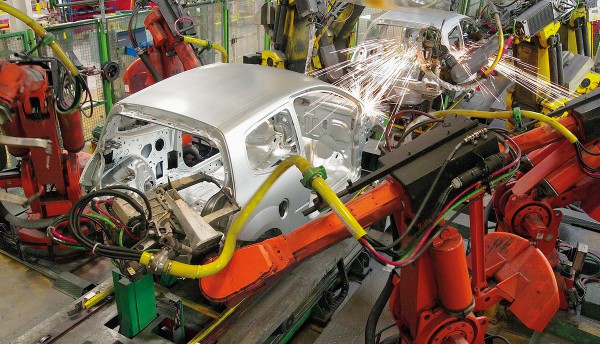
Aston Martin has announced that it will invest GBP200 million in improvements to its existing plant in Gaydon as well as in establishing a new manufacturing facility in St Athan, Wales, which will build the company's brand new DBX crossover. The vast majority of the new investment will go towards the construction and tooling of this new plant which will become the sole production location for the DBX, which first debuted in concept form at last year's Geneva Motor Show. With the decision to build the new crossover vehicle in Wales, the company additionally confirmed that production of the next-generation DB11 sport car and its various derivatives would be focused in Gaydon, and production of the recently announced RapidE Electric Vehicle (EV) will also be located at Gaydon, starting in 2018. Aston Martin announced that the investment will provide around 1,000 new jobs at both sites between 2016 and 2020, with a further 3,000 posts being created in supplier businesses and local industry as a result.
Aston Martin's CEO Andy Palmer said it meant that Aston Martin cars would remain British-built despite the company having looked at a host of potential sites for the location of a new manufacturing plant for the DBX. Palmer said, "During our 103-year history, Aston Martin has become famous for making beautiful hand-crafted cars in England. Through a detailed evaluation of over 20 potential global locations for this new manufacturing facility, we were consistently impressed with the focus on quality, cost and speed from the Welsh government team. As a great British company, we look forward to St Athan joining Gaydon as our second centre of hand-crafted manufacturing excellence." The new plant in St Athan will occupy a compact footprint of 90 acres and will utilise some of the existing Ministry of Defence buildings that are located at the site. These "super hangers" will be transformed and repurposed into car manufacturing facilities, with work starting in 2017 and being completed in 2020. The company estimated that 90% of production will be exported to the US and China.
Outlook and implications
Aston Martin will retain all of its manufacturing capability within the UK, despite having looked at a number of potential locations overseas including the Former Yugoslav Republic (FYR) Macedonia and the United States, with a total of 14 locations under consideration at one point, according to a Reuters report. The company was also looking at a site in Birmingham near its main plant in Gaydon, Warwickshire, but it appears that the Welsh location was favoured as being the most cost-effective option, which is a positive given that the company has experienced losses in recent years as it needs new models to come on stream. The main component of this strategy, which is internally referred to as the "Second Century plan", is that production of the company's new main sports car offering, the DB11, will go into production in the second half of this year. This means the Gaydon plant will expand to 7,000 units by 2020.
The company is progressing its technology and alliances in the field of electric vehicles (EVs), and has signed a memorandum of understanding (MoU) with Chinese tech company LeEco to build the EV version of Aston Martin's Rapide. The original DBX concept was presented as an EV concept at Geneva last year but the production version is likely to be conventionally powered, with hybrid and EV options likely to appear at some point. The decision to locate the plant in Wales is a boon for Prime Minister David Cameron as he campaigns to prevent the UK from exiting the EU, while it also boosts the country's cluster of ultra-premium carmakers, with Bentley and Rolls Royce also having their manufacturing based in the UK.








